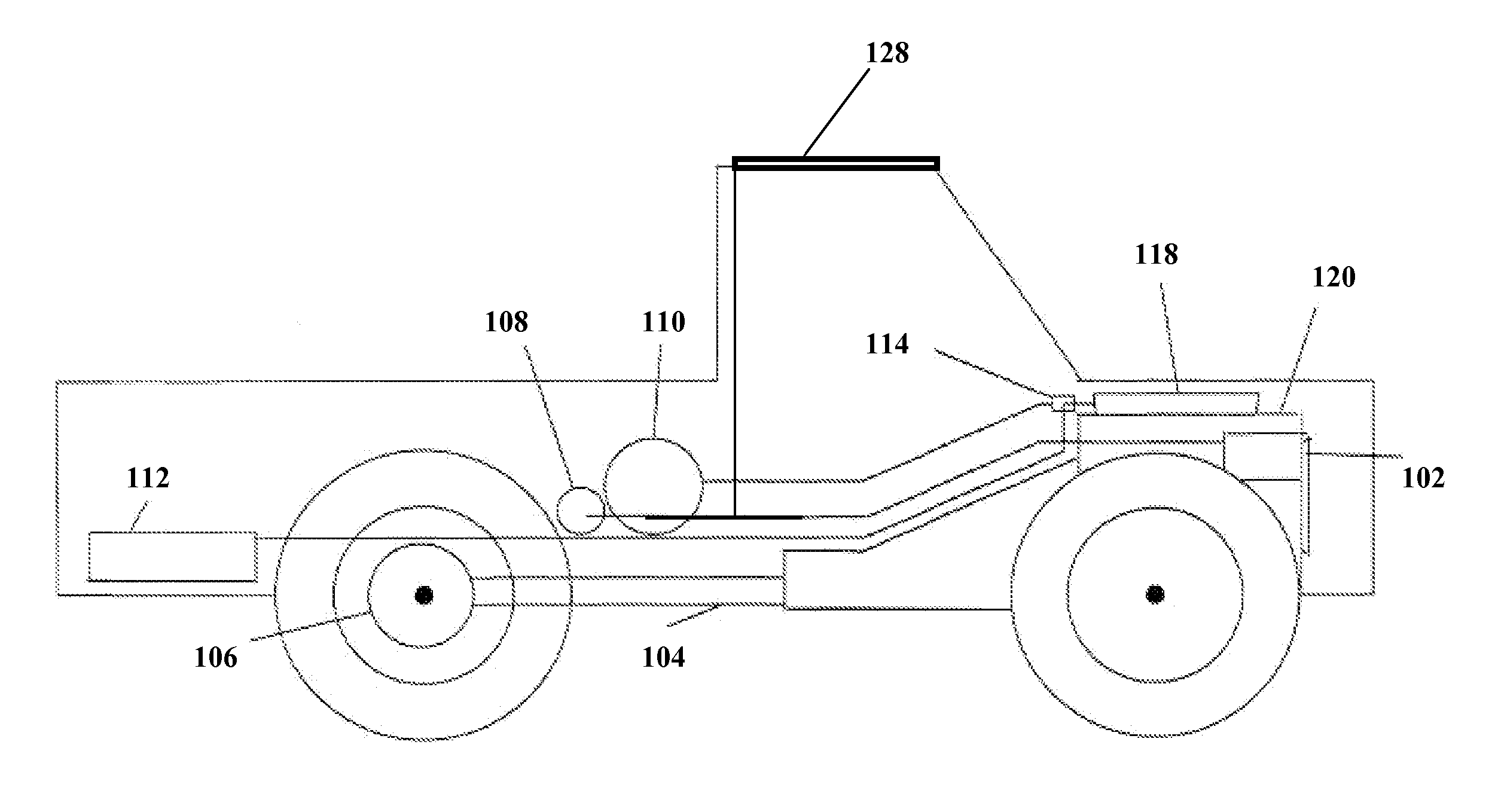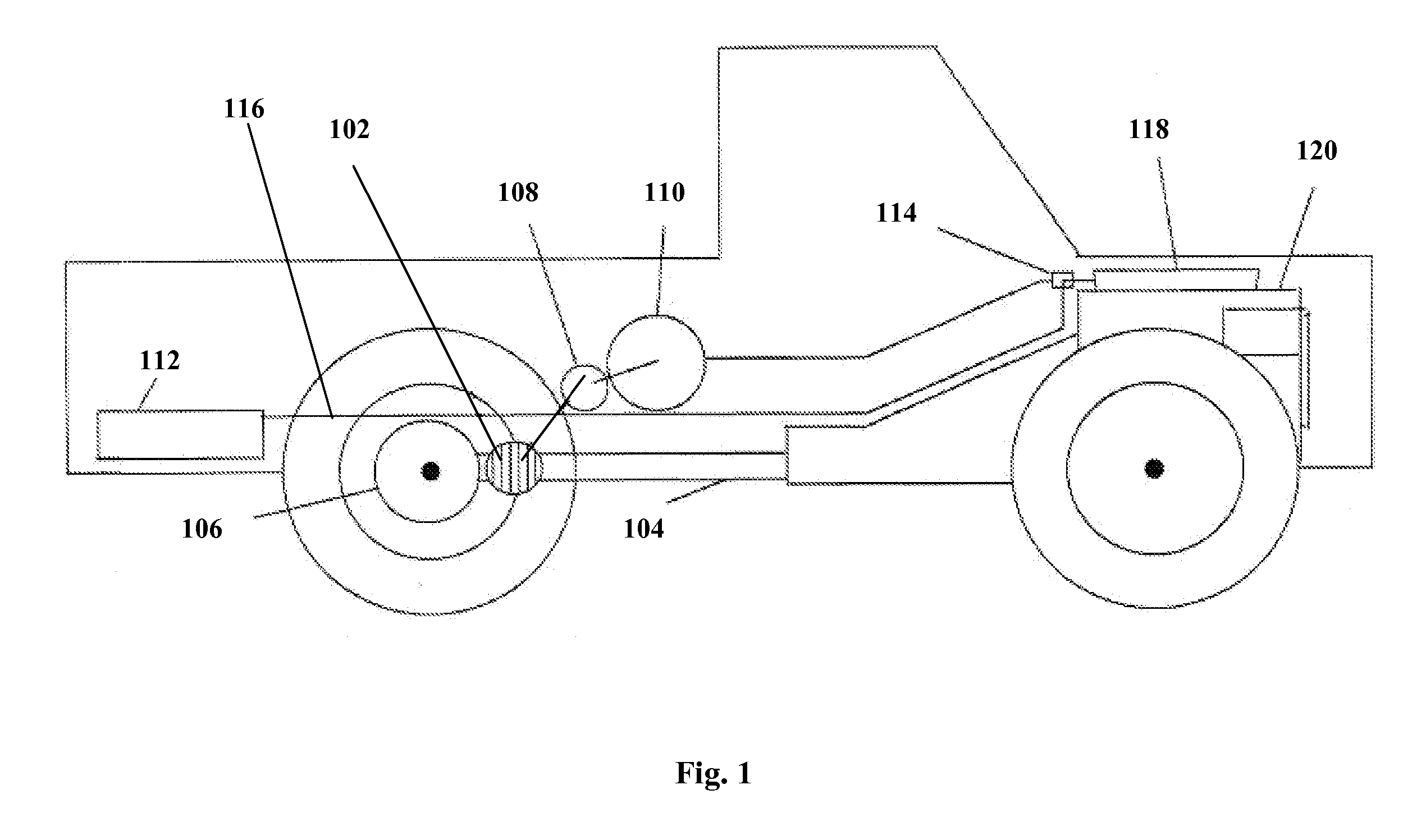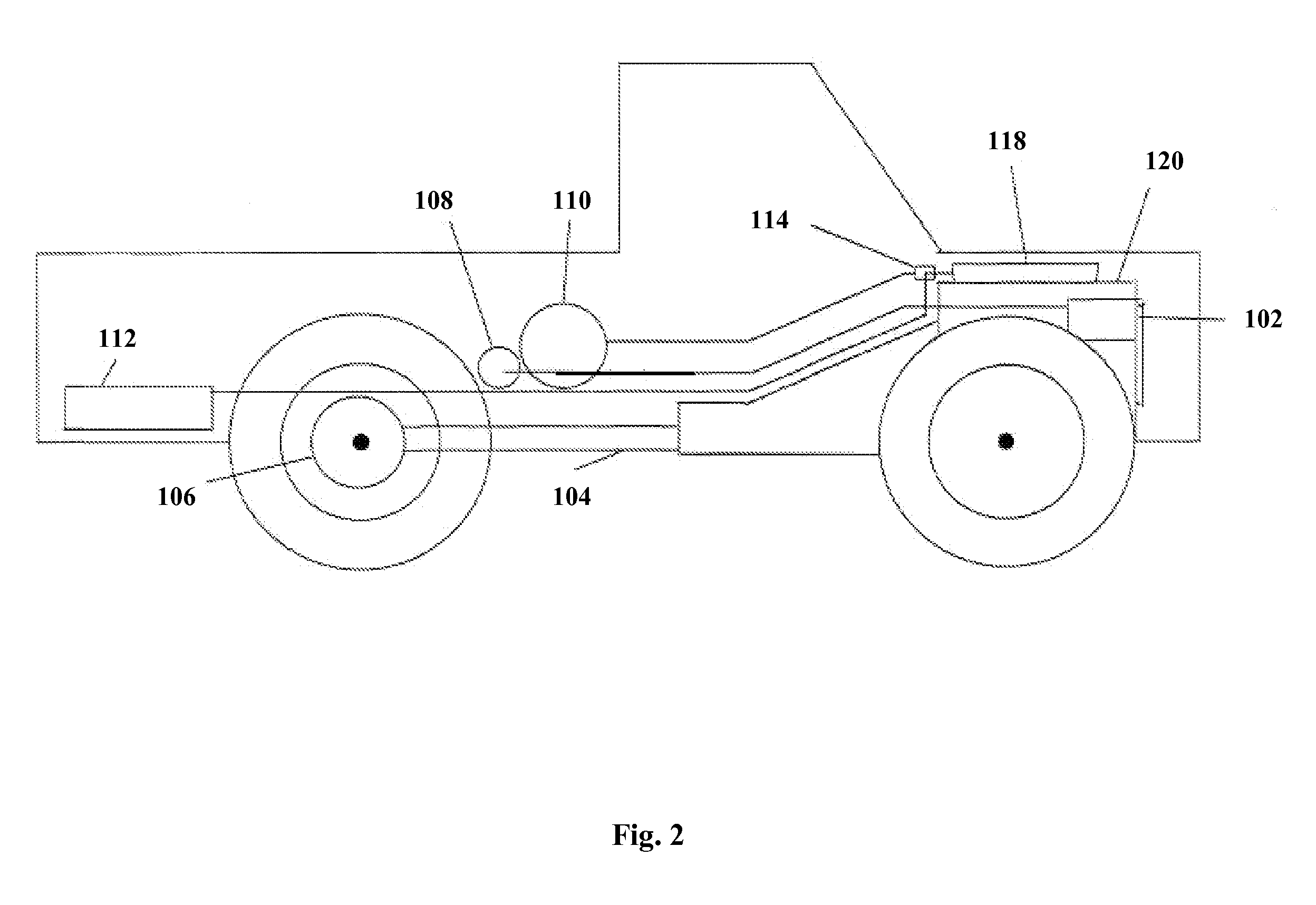Energy conversion system for hydrogen generation and uses thereof
- Summary
- Abstract
- Description
- Claims
- Application Information
AI Technical Summary
Benefits of technology
Problems solved by technology
Method used
Image
Examples
example 1
General H-Brake Operation in an Internal Combustion Engine Vehicle
[0055] An H-Brake is provided as a retrofit kit and installed on-board an internal combustion engine vehicle. The kit includes computerized brake and liquid / gas mixing control members, an electrolyzer, a water / hydrogen storage tank, conduits for supplying water to the electrolyzer and hydrogen to the storage tank and to the liquid / gas mixing control, and a means for coupling a generator / alternator to the drive shaft. Once the vehicle is in motion, the operator depresses the vehicle's foot brake which causes an increase in the alternator's field and thus results in back pressure on the drive train, resulting in slowing / stopping of the vehicle. Concurrently, the vehicle's inertial / kinetic energy is converted to electricity by the generator / alternator.
[0056] The electricity produced by the generator / alternator is then provided to an electrolyzer which utilizes a standard electrolytic solution such as potassium hydroxid...
example 2
H-Brake Kinetic / Inertial Energy Conversion, Storage and Fuel Mixture Control Kit: Drive Shaft Mounted Generator / Alternator
[0063] Turning to FIG. 1, an embodiment of the H-Brake is shown in which a generator / alternator of the H-Brake engages a vehicle's drive shaft. Generator / alternator 102 engages drive shaft 104 such that when the vehicle's brake is applied, a control member, for example a mechanical or electrical potentiometer or a computer control member, determines the proper means for slowing / stopping the vehicle which includes the use of the H-Brake, the conventional braking system, or a combination thereof. Drive axle 106 also engages drive shaft 104 for turning the wheels.
[0064] When the H-Brake is employed, generator / alternator 102 is started and kinetic / inertial energy from drive shaft 104 is transferred to generator / alternator 102 which generates electricity and slows the vehicle. The electricity so produced is fed to an electrolyzer 108 which converts water into gaseou...
example 3
H-Brake Kinetic / Inertial Energy Conversion, Storage and Fuel Mixture Control Kit: Generator / Alternator Friction-Coupled to Engine
[0066] As shown in FIGS. 2 and 3, another embodiment of the H-Brake includes a generator / alternator friction-coupled to the vehicle's internal combustion engine. Turning to FIG. 2, generator / alternator 102 is friction-coupled (such as by a belt) to the internal combustion engine 120 such that when the vehicle's brake is applied, a control member determines the proper means for slowing / stopping the vehicle which includes the use of the H-Brake, the conventional braking system, or a combination thereof.
[0067] When the H-Brake is employed, generator / alternator 102 is started and kinetic / inertial energy from engine 120 is transferred to generator / alternator 102, slowing the engine and vehicle, and generating electricity. The electricity so produced is fed to electrolyzer 108 which converts water into gaseous hydrogen and oxygen. As shown in FIG. 2, a tank 11...
PUM
 Login to View More
Login to View More Abstract
Description
Claims
Application Information
 Login to View More
Login to View More - R&D
- Intellectual Property
- Life Sciences
- Materials
- Tech Scout
- Unparalleled Data Quality
- Higher Quality Content
- 60% Fewer Hallucinations
Browse by: Latest US Patents, China's latest patents, Technical Efficacy Thesaurus, Application Domain, Technology Topic, Popular Technical Reports.
© 2025 PatSnap. All rights reserved.Legal|Privacy policy|Modern Slavery Act Transparency Statement|Sitemap|About US| Contact US: help@patsnap.com



